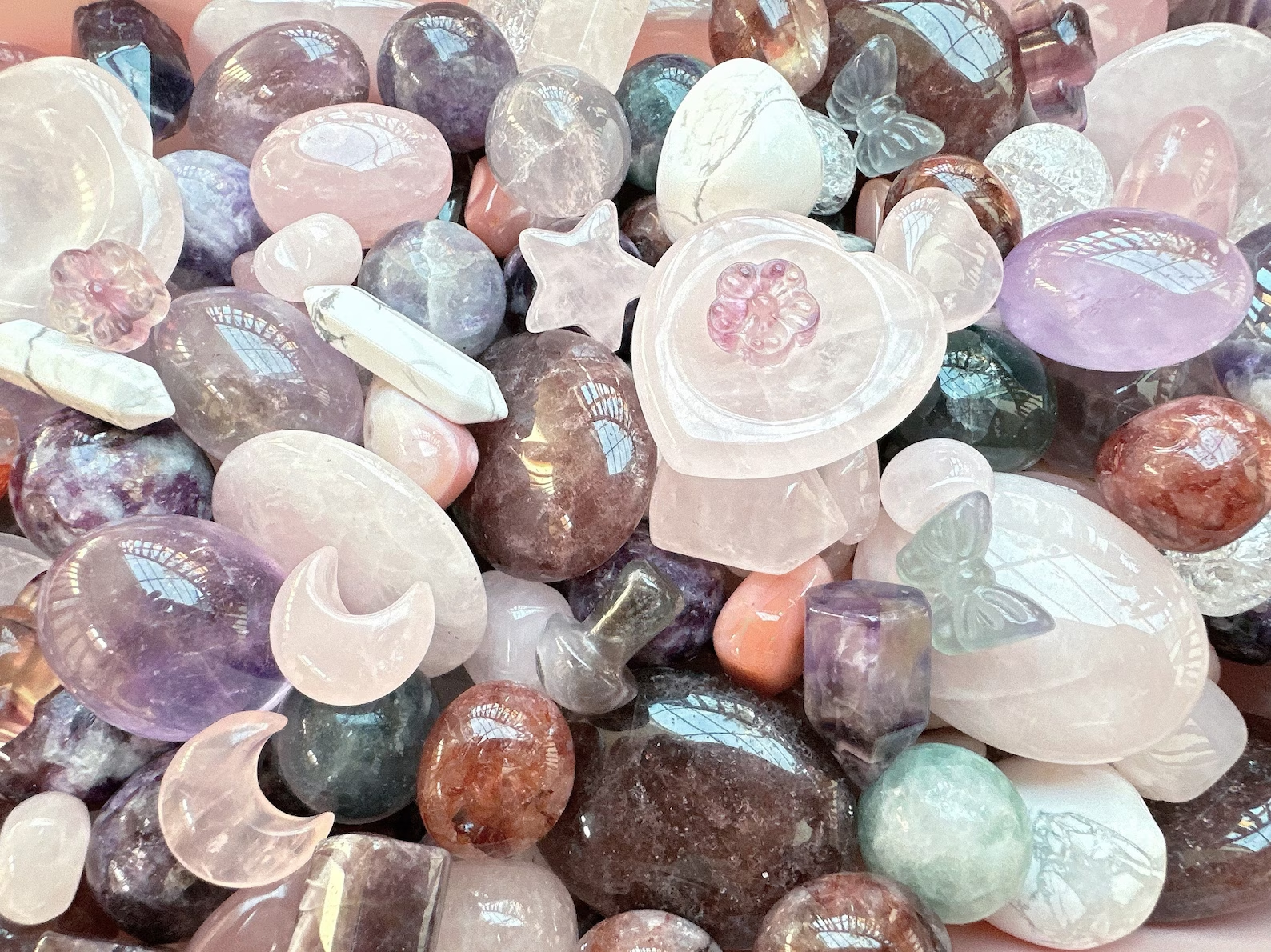8 Types of Jade Stone
- Shokoro

- Jun 26
- 14 min read
Updated: Jul 28

Introduction to 8 Types of Jade Stone
Did you know that when we talk about jade stone, we're actually referring to two completely different types of gemstones? This fascinating distinction is just the beginning of understanding the various types of jade stone available in today's market.
While both jadeite and nephrite fall under the jade umbrella, they couldn't be more different. Jadeite, particularly the rare imperial jade, rivals fine emerald in both color and transparency. Nephrite, on the other hand, boasts impressive durability - it's three times tougher than ceramics and even surpasses steel in strength. With Myanmar supplying 70% of the world's high-quality jadeite and Canada leading in nephrite production, the jade market offers a spectrum of options from deep emerald greens to pristine whites and rich lavenders.
I've created this comprehensive guide to help you navigate the eight distinct types of jade stone, their unique properties, and what makes each one special in the 2025 market.
Jadeite (Imperial Jade)
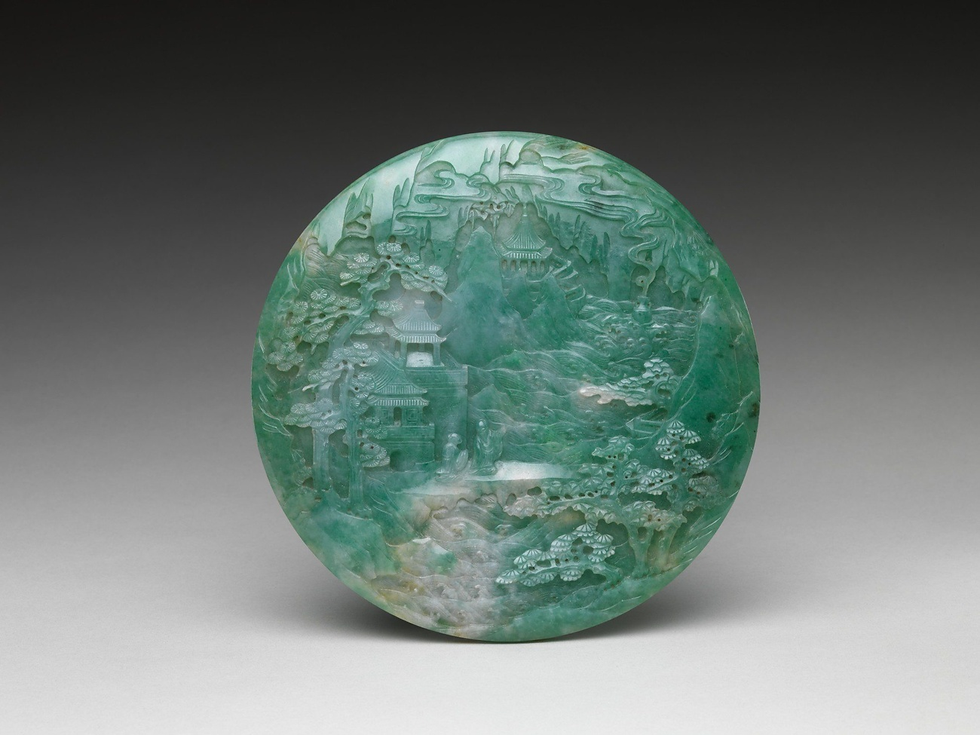
Image Source: International Gem Society
Among all types of jade stone, jadeite stands as the most precious and rare variety. As a pyroxene mineral with composition NaAlSi2O6, jadeite forms exclusively in subduction zones of continental margins under high pressure but relatively low temperature conditions.
Jadeite Properties and Formation
Jadeite exhibits remarkable physical properties with a Mohs hardness of 6.5 to 7.0 and a specific gravity of approximately 3.4. Furthermore, its dense, interlocking crystal structure creates an exceptionally tough material. The formation process occurs in metamorphic rocks, essentially requiring the presence of water and carbonates from ocean floor sediments.
Jadeite Colors and Varieties
The color spectrum of jadeite is notably diverse. Although green dominates the market, jadeite naturally occurs in multiple hues:
Color Variety | Characteristics | Market Position |
Imperial Green | Vivid emerald-green, highly translucent | Most valuable |
Lavender | Soft violet or lilac hue | Second most valuable |
Apple Green | Intense yellowish-green | Highly sought after |
Moss-in-Snow | White with green patches | Collector's favorite |
Mutton Fat | Pure white, waxy appearance | Premium quality |
Jadeite Value and Pricing
The value of jadeite depends primarily on three factors: color, transparency, and texture. Imperial jadeite commands the highest prices, ranging from USD 3,000 to USD 30,000+ per carat for specimens sized 1-3 carats. Notably, the record price for a single piece of jadeite jewelry was set at USD 9.30 million in 1997.
Fine jadeite exhibits several essential characteristics that determine its worth:
Translucency allowing slightly blurred text visibility
Even color distribution without spots or veins
Smooth, fine-grained texture
Absence of visible inclusions or clarity defects
The Chinese market, in particular, values jadeite exceptionally high, considering it more precious than gold. Consequently, the demand from wealthy collectors has significantly outpaced the supply of this rare material.
Nephrite Jade

Image Source: Verified Market Research
Initially discovered over three thousand years ago, nephrite jade earned its reputation as the true jade of ancient China. Throughout history, this remarkable stone has maintained its position as one of the most prized Chinese possessions, serving multiple purposes from tools to religious artifacts.
Nephrite Properties and Characteristics
The defining characteristic of nephrite lies in its exceptional toughness. In fact, despite its relatively modest hardness of 6 to 6.5 on the Mohs scale, nephrite stands as the toughest gem material known. This extraordinary durability stems from its densely packed fibrous structure, making it substantially more resistant to breaking than diamonds.
Nephrite Colors and Types
Nephrite presents an array of colors, each with its distinct value and cultural significance:
Color Variety | Characteristics | Market Position |
Mutton Fat | Translucent creamy white | Most prized in Chinese market |
Spinach Green | Dark cooked spinach color | Popular in Western markets |
Siberian Green | Yellowish-green with black inclusions | Premium quality |
White to Gray | Various opacity levels | Traditional favorite |
The quality assessment of nephrite focuses primarily on brightness of color and translucency. Moreover, higher quality specimens exhibit minimal inclusions, though some collectors value the unique patterns created by natural markings.
Nephrite Market Value
The nephrite market has shown substantial growth, with a valuation of USD 55.1 Billion in 2023, projected to reach USD 820.1 Billion by 2031, growing at a CAGR of 5%. Several factors influence this market expansion:
Cultural significance, especially in Asian markets where nephrite symbolizes purity and immortality
Rising demand from high-net-worth individuals seeking prestigious items
Growing awareness of sustainable sourcing practices
The pricing structure varies based on origin and quality. Presently, New Zealand stands as the primary supplier of premium-quality nephrite, commanding higher prices in the global market. Additionally, the market recognizes specific grading categories, from Grade A (natural color with minimal treatment) to Grade D (composite materials).
The stone's market position benefits from its versatility in jewelry and decorative applications. Subsequently, nephrite has become increasingly popular in both traditional and contemporary designs, with pieces ranging from intricate carvings to modern jewelry settings.
Hetian Jade

Image Source: Buddha & Craft - buddhandicraft
Revered as China's National Jade, Hetian jade holds a distinctive place among the Four Famous Jades of China, primarily sourced from the Xinjiang region's Hetian area.
Hetian Jade Origins
The historical significance of Hetian jade traces back to the Western Han Dynasty, first documented by Sima Qian between 135-86 BCE. Originally named after its source mountain as Kunlun jade, it received its current designation in 1759 when Emperor Qianlong appointed a minister specifically to oversee its mining operations. The stone's extraction occurs in the White Jade (Yurungkash) and Black Jade (Karakash) Rivers near Hetian, where the original deposits have transformed into alluvial boulders.
Hetian Jade Properties
Composed almost entirely of tremolite, Hetian jade contains up to 5% of various minerals including diopside, epidote, clinozoisite, and other trace elements. The stone presents in several distinctive varieties:
Variety | Characteristics | Quality Indicators |
Mutton Fat White | Pure white, gelatin-like luster | Highest grade, 99% purity |
Qingbaiyu | Light green with white undertones | Third-class material |
Topaz | White base with yellow tones | Premium quality |
Moyu (Ink Jade) | Dark with waxy finish | Second to third grade |
Indeed, the stone's quality assessment focuses on three primary aspects: color purity, texture fineness, and structural compactness. Accordingly, the finest specimens exhibit a warm, delicate texture with a lustrous appearance resembling grease.
Hetian Jade Worth
The market value of Hetian jade varies significantly based on type and quality. Seed material, considered the most valuable, commands prices exceeding 10,000 yuan per gram for first-class products. Similarly, mountain materials have seen substantial price increases, rising from 15,000 yuan/kg to 50,000 yuan/kg between 2016 and 2017.
Most compelling evidence of its value comes from the '95 Yutian jade, an extraordinarily pure white variety discovered in 1995, which now commands prices surpassing USD 200,000 per kilogram. Primarily due to environmental protection constraints and declining output, experts project continued price appreciation for premium Hetian jade materials.
The stone's cultural significance extends beyond monetary value, as it traditionally symbolizes nobility and power. In ancient times, craftsmen fashioned it into ritual instruments and ceremonial objects, while modern applications range from fine jewelry to collectible art pieces.
Xiuyan Jade

Image Source: Chinese showcase
Recognized as one of the Four Famous Jades of China, Xiuyan jade emerges from the rich deposits of Xiuyan County in Liaoning Province. This distinctive stone combines both nephrite and serpentine minerals, creating a unique composition of Calcium Magnesium Iron Silicate and Magnesium Iron Silicate Hydroxide.
Xiuyan Jade Characteristics
The stone's composition yields a hard, fine, and exquisite texture. Rather than displaying a single hue, Xiuyan jade presents a spectrum of colors:
Color Variety | Characteristics | Common Uses |
Bright Green | Vibrant, lustrous | Fine jewelry |
Yellow | Warm undertones | Decorative items |
White | Pure, classic | Traditional pieces |
Brown | Earth tones | Ornamental carvings |
With a Mohs hardness rating between 5.5 and 6, Xiuyan jade offers sufficient durability for various applications. Nevertheless, its relatively lower hardness makes it ideal for intricate carvings and detailed artworks.
Xiuyan Jade Sources
Primarily mined in the Xiuyan area of Anshan, this jade's extraction history dates back to the Neolithic period. The region's unique geological conditions contribute to the formation of this distinctive stone. Soon after its discovery during the Eastern Zhou Dynasty (770 – 256 BCE), Xiuyan jade gained prominence in ceremonial and decorative applications.
The mining area's significance is reflected in its nickname - "Jade City of China" - with estimates suggesting that up to 80% of China's jade production originates from Xiuyan. Whether used for religious ceremonies or artistic expression, the stone maintains its cultural importance.
Xiuyan Jade Market Value
Generally positioned as an affordable option in the jade market, Xiuyan jade offers excellent value for buyers seeking quality stone without premium pricing. The stone's market appeal stems from several key features:
Robust wearing properties
Versatility in applications
Traditional cultural significance
Excellent carving potential
Overall, Xiuyan jade's affordability and durability have made it the most common type of jade in the global market. Therefore, many jade gemstone beauty tools and decorative items utilize this variety. The stone's market position benefits from its traditional status and practical applications, ranging from jewelry to ceremonial objects.
Lantian Jade
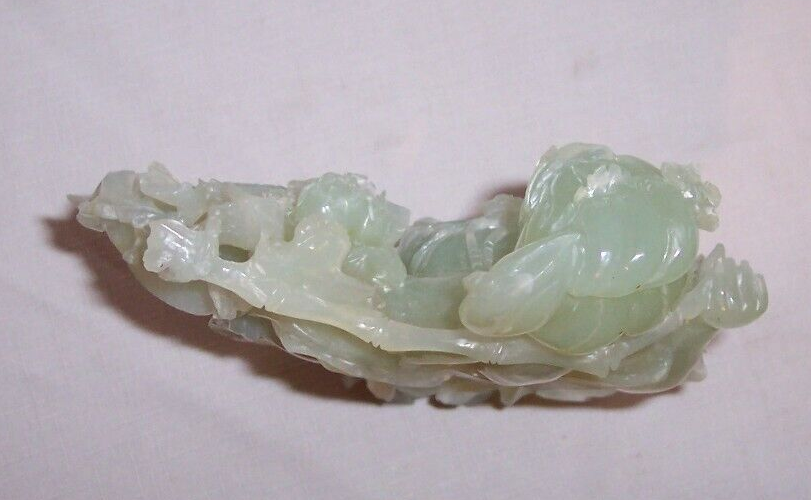
Image Source: eBay
Historically traced back to the Neolithic period, Lantian jade stands as one of China's most enigmatic jade varieties, with archeological discoveries at the Xinjie site in Lantian County providing evidence of its early use.
Lantian Jade History
The stone's golden era spanned from the Qin Dynasty (221 BC) through the Tang and Song Dynasties. Primarily recognized for its remarkable role in Chinese history, Lantian jade gained prominence when Emperor Qin Shihuang chose it for his official emperor stamp. This imperial selection established the stone's status as a symbol of power, as whoever possessed the Lantian jade emperor stamp became the legitimate ruler of the Chinese nation.
Lantian Jade Features
Modern Lantian jade presents itself in two distinct varieties:
Type | Composition | Characteristics |
Type 1 | Pure Serpentine | Antigorite or Lizardite dominant |
Type 2 | Mixed | Calcite and Serpentine blend |
The stone exhibits an impressive color palette ranging from deep green to light green, cyan, pale blue, yellow, and various white hues. Among these variations, the pure and yellowish-white specimens, alongside pale blue varieties, command the highest value in today's market.
What sets Lantian jade apart is its exceptional solidity, making it an ideal medium for intricate carvings. The stone's rigidity facilitates detailed craftsmanship, resulting in exquisite decorative pieces and accessories that showcase traditional Chinese artistry.
Lantian Jade Pricing
The market value of Lantian jade fluctuates based on several key factors:
Color purity and consistency
Texture refinement
Historical significance
Craftsmanship quality
Formerly considered more valuable than gold in ancient China, contemporary Lantian jade maintains its position as a sought-after material for both collectors and craftsmen. The stone's worth primarily stems from its historical significance and practical applications in creating ornamental pieces, ranging from traditional teaware to modern jewelry.
Beyond its monetary value, Lantian jade holds significance in traditional Chinese medicine. The stone supposedly offers healing properties, primarily focusing on blood circulation improvement and joint tension relief. These therapeutic associations, combined with its historical importance, continue to influence its market position in 2025.
Kunlun Jade

Image Source: Geology In
Stretching across the majestic Kunlun Mountains of western China lies one of the world's largest unexploited deposits of white jade. This remarkable stone, known as Kunlun Jade, primarily consists of actinolite and tremolite minerals, with traces of wollastonite.
Kunlun Jade Formation
The formation process occurs under unique geological conditions within the Western Kunlun Orogen, where extensive white and brown nephrite deposits have emerged over millions of years. These deposits span an impressive 1,300 kilometers along the southern end of the Tarim Basin. The jade forms through slow crystallization of minerals under extreme pressure and heat within the Earth's crust.
Kunlun Jade Properties
The stone exhibits distinctive characteristics that set it apart from other jade varieties:
Property | Description | Quality Indicator |
Color Range | Pale green to white | Purity of shade |
Texture | Waxy luster | Surface qualitye |
Transparency | Translucent to semi-translucent | Light transmission |
Structure | Interlocking crystals | Durability |
Kunlun jade's hardness surpasses glass, hence serving as a primary identification method. Under light exposure, the stone reveals an intricate cotton fiber weaving structure, simultaneously displaying its authentic character.
Kunlun Jade Value
The market position of Kunlun jade reflects its scarcity and cultural significance. As well as being a precious stone, it holds deep cultural meaning in Chinese tradition, symbolizing wealth and prosperity. The pricing structure follows strict quality parameters:
Fine white specimens command premium prices
Craftsmanship significantly influences value
Authentication relies on specific indicators:
Higher than glass hardness
Distinctive internal structure
Pure color consistency
Alternatively, experts caution against low-priced offerings, as they often indicate counterfeit materials. The stone's value appreciation potential stems from its limited availability and growing demand among collectors.
In Chinese culture, this precious stone extends beyond mere ornamental value, as it harmonizes body, mind, and spirit. The finest pieces showcase exquisite green-white patterns, primarily sought after for their esthetic appeal and investment potential.
Black Nephrite Jade
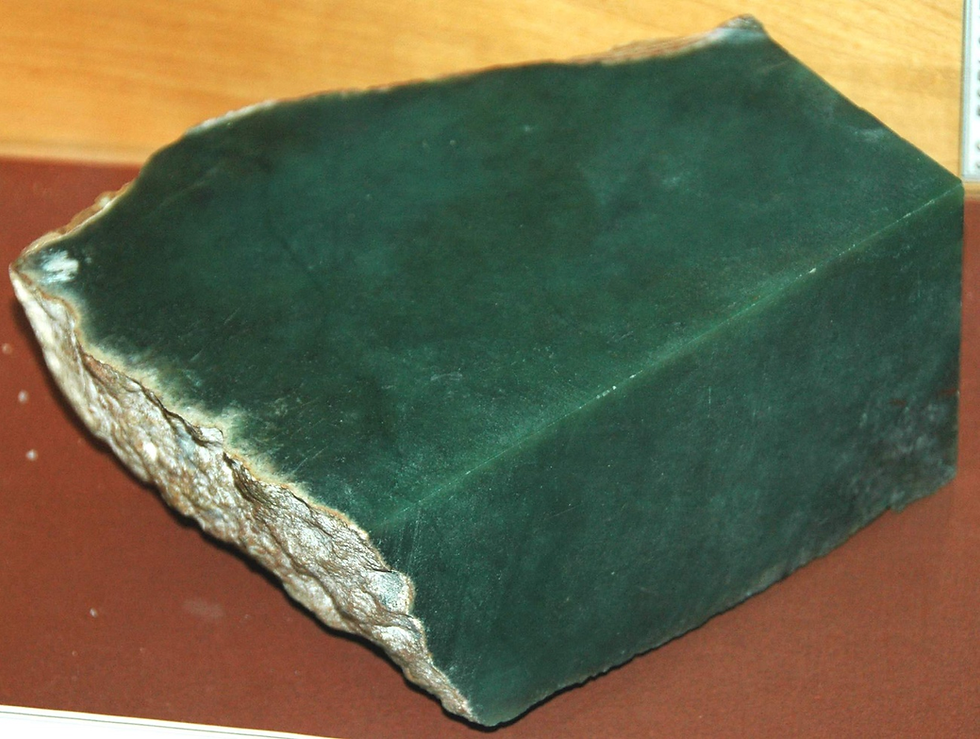
Image Source: Geology In
Among the diverse varieties of jade stone, black nephrite emerges as a distinctive type, primarily formed through Ca-skarn contact metasomatism between limestone and diabase intrusions. This rare variety showcases unique characteristics that set it apart from other jade types.
Black Nephrite Formation
The formation process occurs under specific geological conditions, with significant deposits found in British Columbia, Canada, and the Guangxi region of southern China. The stone develops through a complex interaction between limestone bearing siliceous rock and diabase intrusions, resulting in its distinctive composition.
Black Nephrite Properties
Black nephrite exhibits remarkable physical characteristics:
Property | Specification | Quality Indicator |
Hardness | 6.0-6.5 Mohs | Durability |
Color | Black in natural light | Opacity |
Composition | Actinolite/ferro-actinolite | Authenticity |
Iron Content | 11.67-25.75 wt.% Fe oxides | Color intensity |
The stone's unique properties stem from its high iron content, resulting in a specific gravity ranging from 3.015 to 3.405. Alternatively, when examined in thin sections, black nephrite reveals greenish yellow or brownish yellow hues. The stone's surface takes an exceptional polish, with premium specimens achieving a mirror-like finish.
Black Nephrite Worth
The market value of black nephrite fluctuates between USD 100 to USD 500 per piece. Several factors influence its pricing:
Translucency level - higher translucency commands premium prices
Presence of inclusions - fewer inclusions increase value
Color consistency - uniform black color enhances worth
British Columbia's black nephrite holds particular significance in the market, recognized as one of the most sought-after gemstones. The stone's toughness, attributed to its interlocking meshwork of fine fibers, makes it exceptionally valuable for both ornamental and practical applications.
In the current market, black nephrite's popularity continues to grow, primarily because of its distinctive appearance and practical applications in jewelry and decorative items. The stone requires specific care, as its porous nature makes it susceptible to absorbing colors. For maintenance, experts recommend using lukewarm soapy water and a soft cloth, avoiding extreme temperature fluctuations.
Tremolite Jade
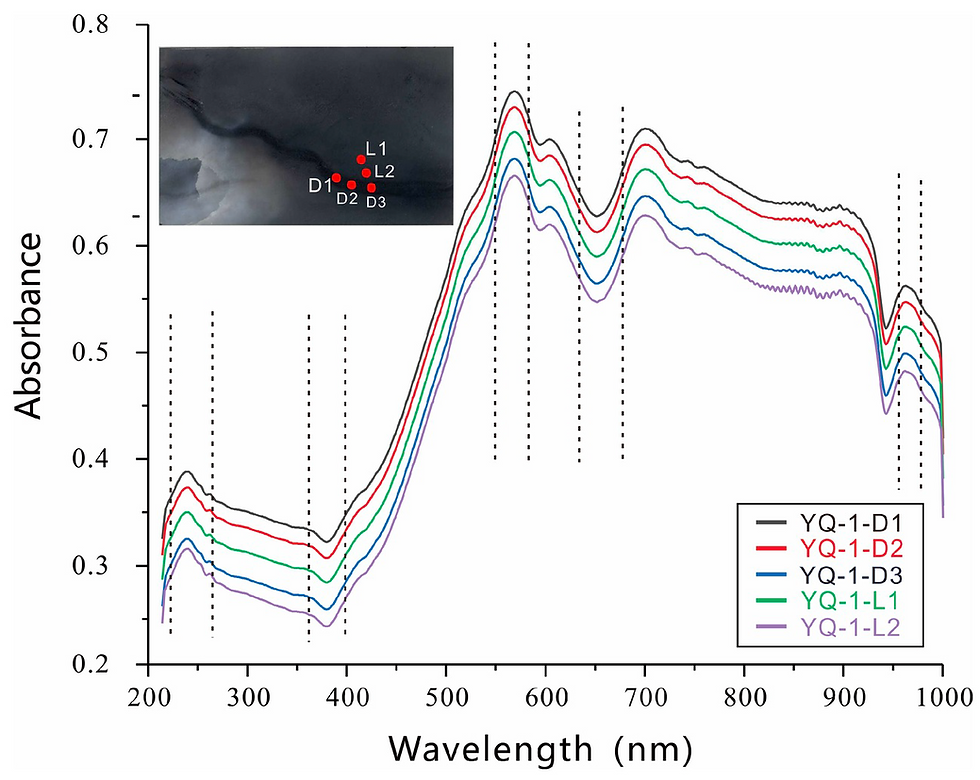
Image Source: MDPI
Representing a unique category in the jade family, tremolite jade encompasses all varieties of nephrite primarily composed of tremolite minerals. This distinctive stone serves as the foundation for several renowned jade types, coupled with its remarkable versatility in both appearance and application.
Tremolite Jade Origins
The origin of tremolite jade traces back to contact-metamorphosed dolomites and magnesian limestones. Considering its geological significance, the stone forms through specific metamorphic processes, primarily in marble-type deposits across various geographical regions. These deposits span across multiple territories:
Northwest Region (Xinjiang, Qinghai, Gansu)
Southwest Region (Sichuan, Guizhou, Guangxi)
Southeast Region (Jiangsu)
Northeast Region (Liaoning)
North China Region (Hebei)
Tremolite Jade Features
In terms of composition, pure tremolite jade consists almost entirely of tremolite, containing up to 5% of various minerals. These additional components include:
Mineral Inclusions | Effect on Properties |
Diopside | Enhances durability |
Epidote | Affects color variation |
Clinozoisite | Influences texture |
Olivine | Contributes to strength |
Magnetite | Impacts appearance |
The stone's color palette proves remarkably diverse. As opposed to common perception, not all tremolite jades appear white, alternatively presenting various hues caused by mineral inclusions. The Hetian, Manasi, and Meiling varieties showcase this diversity, appearing in white, yellow, bluish, or black shades.
Tremolite Jade Market Value
The market position of tremolite jade fluctuates based on several key factors, with prices ranging between USD 100 to USD 100,000 per kilogram. The value assessment primarily focuses on:
Origin authenticity
Quality parameters
Color consistency
Translucency levels
Recent scientific studies have revealed fascinating insights about color formation in tremolite jade. Research utilizing laser ablation inductively coupled plasma mass spectrometry has demonstrated that elements like Mn, Fe, and Cu significantly influence color intensity. These findings have revolutionized authentication processes and value assessment methods.
The investment potential of tremolite jade continues to grow, with raw nephrite jade values expected to increase. This appreciation stems from both its historical significance and practical applications in jewelry and ornamental pieces. The stone's cultural importance extends beyond mere monetary value, as it traditionally symbolizes balance and harmony.
Comparison Table
Comparison of Jade Stone Types
Jade Type | Primary Origin | Main Composition | Notable Characteristics | Color Varieties | Market Value/Significance |
Jadeite (Imperial Jade) | Myanmar (70% of high-quality) | NaAlSi2O6 | Hardness: 6.5-7.0; Forms in subduction zones | Imperial Green, Lavender, Apple Green, Moss-in-Snow, Mutton Fat | USD 3,000-30,000+ per carat for premium pieces |
Nephrite Jade | Canada (leading producer) | Calcium-rich amphibole | Toughest known gem material; Hardness: 6-6.5 | Mutton Fat, Spinach Green, Siberian Green, White to Gray | Market valued at USD 55.1B (2023), projected USD 820.1B by 2031 |
Hetian Jade | Xinjiang region, China | Tremolite (up to 95%) | China's National Jade; Ancient imperial significance | Mutton Fat White, Qingbaiyu, Topaz, Moyu | Premium pieces exceed 10,000 yuan per gram |
Xiuyan Jade | Liaoning Province, China | Ca-Mg-Fe Silicate & Mg-Fe Silicate Hydroxide | Hardness: 5.5-6; Excellent for carving | Bright Green, Yellow, White, Brown | Most common jade in global market; Affordable pricing |
Lantian Jade | Lantian County, China | Serpentine or Serpentine-Calcite mix | Historical imperial significance; High solidity | Deep Green, Light Green, Cyan, Pale Blue, Yellow, White | Historically more valuable than gold; Premium pricing for pure specimens |
Kunlun Jade | Kunlun Mountains, China | Actinolite and Tremolite | Harder than glass; Cotton fiber structure | Pale Green to White | Premium pricing for fine white specimens |
Black Nephrite Jade | British Columbia, Canada & Guangxi, China | Actinolite/ferro-actinolite | High iron content (11.67-25.75%); Hardness: 6.0-6.5 | Black with greenish/brownish undertones | USD 100-500 per piece |
Tremolite Jade | Multiple regions in China | Pure Tremolite with minor minerals | Diverse mineral composition | White, Yellow, Bluish, Black | USD 100-100,000 per kilogram |
Conclusion
Each type of jade stone tells its own remarkable story through unique properties, origins, and cultural significance. Jadeite, particularly the imperial variety from Myanmar, stands out with its exceptional color range and transparency, commanding prices up to $30,000 per carat. Nephrite proves itself as the toughest gem material known, making it perfect for both practical and decorative uses.
Hetian jade, China's national treasure, showcases extraordinary purity in its prized mutton fat white variety. Additionally, Xiuyan jade offers excellent value with its perfect balance of durability and carving potential. Lantian jade carries imperial heritage, while Kunlun jade's distinctive cotton fiber structure sets it apart from other varieties.
Black nephrite's high iron content creates its unique appearance, particularly valued in specimens from British Columbia. Therefore, tremolite jade rounds out the collection with its remarkable versatility in both composition and color range.
Above all, understanding these eight distinct jade varieties helps make informed decisions when purchasing jade pieces. Whether seeking an investment-grade imperial jadeite or an affordable Xiuyan jade carving, each type offers specific advantages based on intended use and budget considerations.
FAQs
Q1. What is considered the most valuable type of jade?
Imperial jadeite, characterized by its vivid emerald-green color and high translucency, is generally regarded as the most valuable type of jade. It can command prices of up to $30,000 per carat for premium specimens.
Q2. How can I distinguish between real and fake jade?
Authentic jade has a higher hardness than glass and exhibits a unique internal structure. Look for a waxy luster, translucency, and consistent color. Be cautious of extremely low-priced items, as they may indicate imitations. For certainty, consult a reputable gemologist or have the stone tested in a laboratory.
Q3. What are the main differences between jadeite and nephrite?
Jadeite is typically more valuable and harder (6.5-7.0 on the Mohs scale) with a wider range of vivid colors. Nephrite is slightly softer (6.0-6.5) but tougher, often appearing in more muted green to white shades. Jadeite is rarer, while nephrite is more commonly found and generally less expensive.
Q4. Are there different grades of jade quality?
Yes, jade quality is often categorized into grades. For jadeite, Type A is completely natural and untreated, Type B has been chemically bleached and polymer-impregnated, and Type C is dyed. Type A is the most valuable and recommended. Quality is also assessed based on color, translucency, texture, and the presence of inclusions.
Q5. What should I consider when buying jade jewelry?
When purchasing jade jewelry, consider the type of jade (jadeite or nephrite), its color and translucency, the presence of any treatments, and the overall craftsmanship. Ensure you're buying from a reputable source and, if possible, obtain a certificate of authenticity. Be aware that high-quality jade can be expensive, so unusually low prices may indicate imitations or lower-grade material.
Explore Other Healing Crystal Blog
Ultimate Guide to Birthstone by Month, Day and Zodiac Sign
Jade Crystal Meaning, Healing Properties and Everyday Uses
13 Most Powerful Healing Crystals: Ancient Secrets Revealed
Unleash Your Inner Charm: Crystals for Good Luck and Success in Every Aspect of Life
13 Crystals for Love: Discover the Best Crystals to Manifest Love and Harmony
Crystal Dreamscape: 7 Crystals That Improve Your Sleep Quality and Influence Your Dreams
Harness the Power of Crystals for Travel Protection
Discover the Magic of Crystals for Intuition Enhancement
Unlock the Mysteries: The Ultimate Guide to Moonstone Crystal Meaning
Amethyst Crystals Meaning, Healing Properties and Benefits of the Purple Birthstone
Citrine Crystal Meaning, Healing Properties and Daily Use
From the Depths of the Ocean: Aquamarine Meaning
Complete Guide to Emerald Crystal Meaning
Charting Your Path: Peridot Meaning, Healing Properties and Dainty Use
The Comprehensive Guide to Hematite Stone Meaning, Properties, and Daily Applications
Tanzanite: A Deep-Dive into its Unique Meaning, Therapeutic Properties and Dynamic Uses
Website: Shokoro Handmade (Dainty Jewelry Brand Canada)
Etsy Store: Shokoro Design
Etsy Genuine Natural Gemstone Jewelry Store: From Earth by Shokoro
Blog: "Best Canada Jewelry Blog": Subscribe to receive our latest blog post
Instagram: shokoro_ca
Facebook: shokoro
Pinterest: Shokoro






























